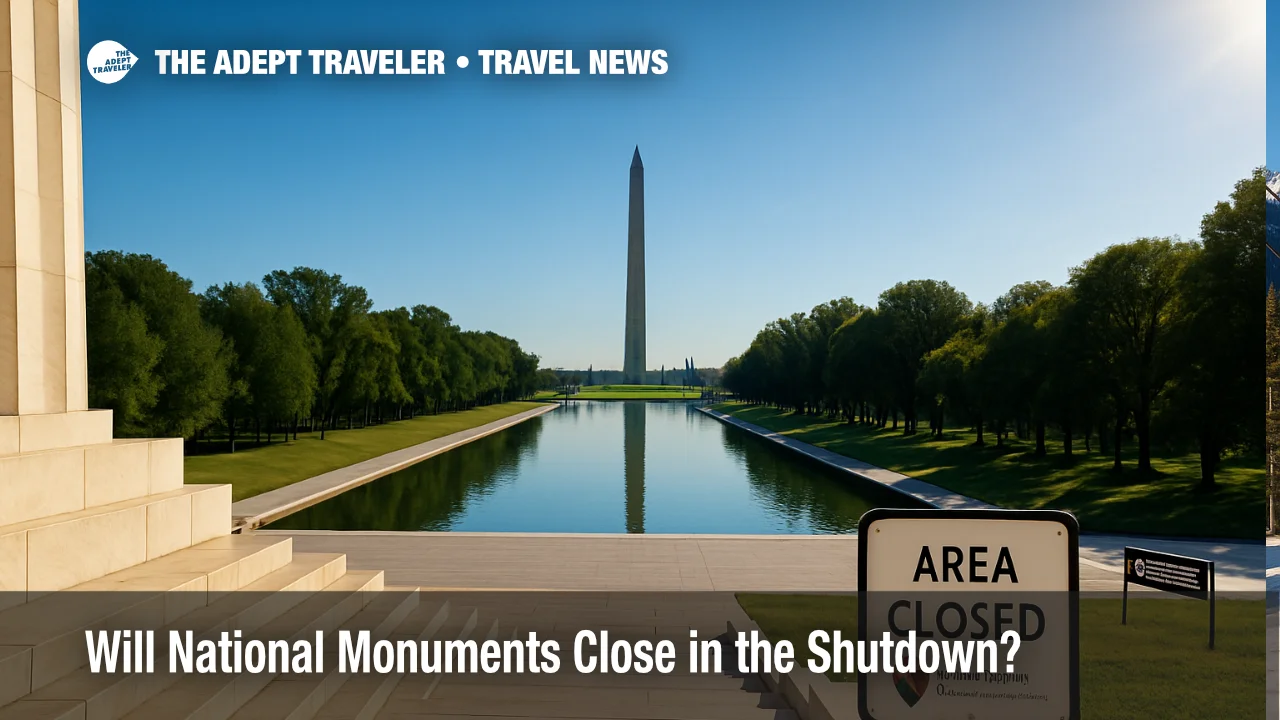Will national monuments close in the shutdown?

National monuments took center stage during past shutdowns, most notably in 2013 when open-air memorials on the National Mall were barricaded. With the federal government shutting down on October 1, 2025, travelers are asking what happens now. The National Park Service has published a current contingency plan that keeps most outdoor areas accessible but closes locked facilities, with site-by-site adjustments possible to protect resources and safety. Here is how that translates to national monuments and memorials, and how it compares with previous approaches.
Key points
- Why it matters: National monuments anchor many city trips; closures ripple across visitor plans.
- Travel impact: Open-air areas remain accessible; buildings, restrooms, and staffed sites may be closed.
- What's next: Superintendents can restrict access if safety, sanitation, or resource damage becomes a concern.
- 2013 precedent: Open-air memorials were barricaded during a 16-day shutdown.
- 2018-2019 precedent: Many parks stayed open with limited services; GAO later flagged fee-funding issues.
Snapshot
Under the September 2025 contingency plan, the National Park Service says park roads, trails, lookouts, and open-air memorials will generally remain accessible during the shutdown. Facilities that are normally locked, such as visitor centers, museums, and gated parking lots, will be secured. No new permits will be issued, and most routine services, including staffed information desks and many restrooms, will pause. If trash, road conditions, crowding, or resource damage create safety or health risks, local superintendents can close specific areas. Some basic services may be supported using retained recreation fees where legally permissible, but units without accessible areas will not operate. In plain terms: travelers can typically view outdoor monuments, but should expect limited amenities, potential crowd controls, and rapid changes at sensitive sites.
Background
In October 2013, during a 16-day lapse in funding, high-profile memorials on the National Mall were barricaded, prompting national attention and congressional scrutiny. During the 2018-2019 shutdown, policy shifted; many national parks and outdoor sites remained accessible with minimal staffing. Afterward, the Government Accountability Office determined that using certain recreation fees to sustain operations during a lapse violated federal appropriations law. Those differing outcomes explain today's mixed expectations. The 2025 plan aims to keep open-air areas generally accessible while reserving authority to close sites if conditions deteriorate. It also outlines when limited services may be supported and emphasizes that locked facilities remain closed. This framework is designed to balance public access with safety and resource protection during a funding lapse.
Latest developments
What the 2025 plan means for national monuments and memorials
For outdoor national monuments and open-air memorials, the plan's default is access without typical services. Expect locked buildings, secured museums, and unstaffed information desks. Restrooms and trash collection may be limited or paused unless supported under specific fee-use provisions. Superintendents retain discretion, with approval from Interior leadership, to tighten or suspend access if public health, safety, or resource protection requires it. Sites that lack accessible outdoor areas will not operate. First Amendment activity remains subject to existing regulations, and special events that need staff support are paused. Practically, travelers visiting landmarks like the Lincoln Memorial or World War II Memorial should find outdoor areas open but should plan for reduced amenities, crowd bottlenecks, and less real-time information, since park websites and social media are largely not updated during a lapse.
Analysis
Will national monuments be closed in this shutdown? In most cases, no; outdoor memorials and open-air monument grounds will generally remain accessible, per the current plan. The sharp 2013 approach that barricaded open-air memorials created a widely remembered benchmark for "closed," while the 2018-2019 approach kept many sites accessible but drew criticism over sanitation, safety, and funding compliance. The 2025 plan sits between those poles: it presumes access to outdoor spaces but establishes clear triggers for targeted closures if conditions worsen, and it reiterates that locked facilities remain locked. For travelers, the practical takeaway is contingency planning. Bring water, restrooms may be limited; expect fewer rangers; check local advisories on the ground, since official updates may be sparse during the lapse. If conditions degrade, area-specific closures can occur quickly. Neutral to any political debate, the operational signal is clear: access where feasible, closures where needed.
Final thoughts
Travelers planning visits to national monuments during the shutdown should expect outdoor access but pared-back services, with the possibility of swift, localized restrictions. The 2013 barricades inform current concerns, and the 2019 experience informs today's safeguards. Build extra time, prepare for limited amenities, and monitor on-site signage. The policy goal is consistent access balanced with protection of people and places, which is the most relevant lens for visitors asking whether national monuments will be closed.
Sources
- National Park Service Contingency Plan, September 2025, U.S. Department of the Interior
- Department of the Interior-Activities at National Parks During the Lapse in Appropriations (B-330776), U.S. Government Accountability Office
- "As Difficult As Possible: The National Park Service's Implementation of the Government Shutdown," U.S. House joint hearing, 113th Congress
- National parks impacted by shutdown: Half of staff furloughed, access limited, ABC News
- Here's what will be affected by the government shutdown, OPB
